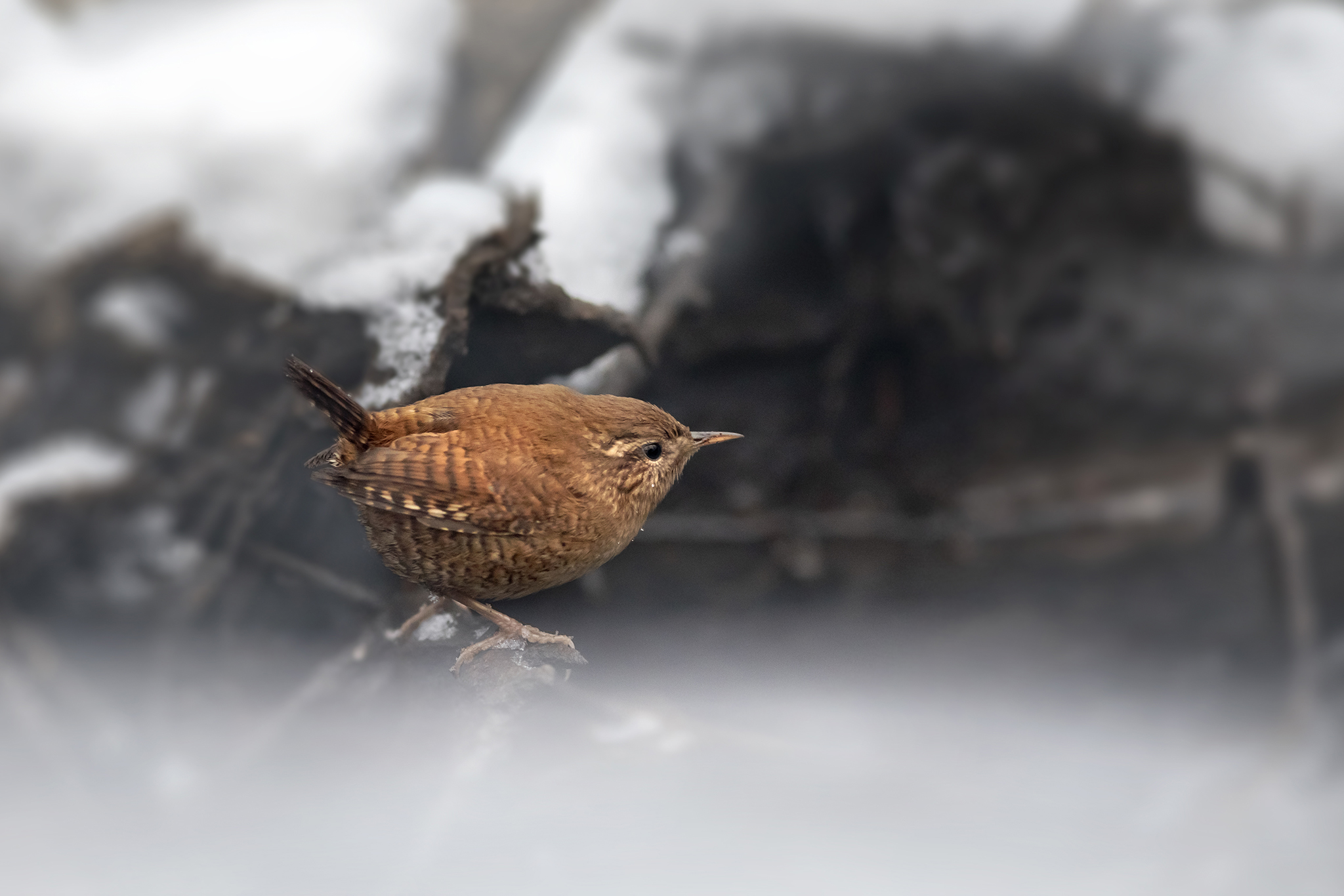The Eurasian wren (Troglodytes troglodytes) is a very small insectivorous bird, and the only member of the wren family Troglodytidae found in Eurasia and Africa (Maghreb). In Anglophone Europe, it is commonly known simply as the wren. It has a very short tail which is often held erect, a short neck and a relative long thin bill. It is russet brown above, paler buff-brown below and has a cream buff supercilium. The sexes are alike.
[Wikipedia]
The Eurasian Wren, scientifically known as Troglodytes troglodytes, is a small bird species belonging to the family Troglodytidae. Here are some key points about the Eurasian Wren:
- Description: The Eurasian Wren is a tiny bird, measuring around 9 to 10 centimeters in length, with a wingspan of about 13 to 17 centimeters. It has a round body, short tail, and relatively long, thin bill. The plumage of the Eurasian Wren varies, but it typically has brown upperparts with darker barring or mottling, and paler underparts with buff or grayish tones. It has a distinctive white eyebrow stripe and often cocks its tail upwards.
- Distribution: The Eurasian Wren is widely distributed across Europe, Asia, and parts of North Africa. It inhabits a variety of habitats, including woodlands, scrublands, gardens, parks, and hedgerows. It is a non-migratory species in most of its range, although northern populations may undertake short-distance migrations during harsh winters.
- Behavior: Eurasian Wrens are highly active and secretive birds, often foraging close to the ground in dense vegetation or undergrowth. They feed primarily on insects and other invertebrates, which they glean from foliage or probe from crevices with their slender bills. Despite their small size, they have loud and melodious songs, which they use to establish territories and attract mates. Their songs are often characterized by rapid trills and complex sequences of notes.
- Breeding: Eurasian Wrens breed from spring to summer. They build dome-shaped nests made of moss, leaves, and grass, often concealed within vegetation or hidden in crevices. The female lays a clutch of eggs, usually numbering 5 to 8, which she incubates for about two weeks. Both parents participate in feeding and caring for the young.
- Conservation: The Eurasian Wren is not considered globally threatened and is listed as a species of least concern by the International Union for Conservation of Nature (IUCN). However, like many other bird species, it faces threats from habitat loss, habitat fragmentation, and predation by introduced species. Conservation efforts aimed at protecting its natural habitats are important for ensuring the continued survival of this species.
Overall, the Eurasian Wren is a charming and resilient bird species known for its secretive behavior, lively song, and adaptability to various habitats. It is a beloved garden bird in many parts of its range and plays important ecological roles as a predator of insects and a contributor to seed dispersal.
Views: 1311
Subscribe to the newsletter:
